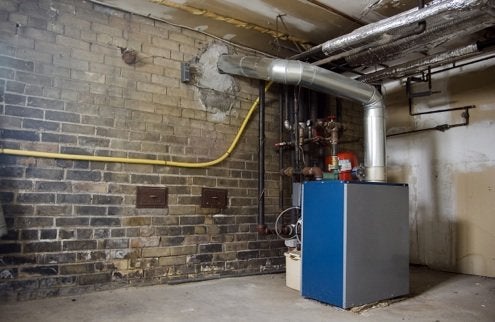
There are many factors that you should consider when deciding whether to replace or repair your roof. These factors include size, cost, time frame and materials. To preserve your home's aesthetic values, it is crucial to keep your roof in its original condition. You can save money by repairing your roof instead of replacing it.
Prices
There are two things that will determine the cost of repairing or replacing your roofing: how much it will cost and when it is required. While it is tempting to save a few bucks by attempting to repair the damage yourself, you may be just masking the problem and exposing yourself to a bigger problem down the line. For this job, it is best to hire a professional. A contractor may also offer specials and community assistance programs to help reduce the cost.

The extent of damage to the roof and the materials used will impact the cost of roofing repairs. Sometimes, such as replacing a roof deck, structural engineering may be required, which can raise the cost. The type of roof as well as the location can also impact the cost.
Time frame
The time frame for repairing or replacing your roof will depend on a few factors, including the type of roof and its complexity. Depending on the size and shape, a typical roof replacement will take between two and five days. It may take days to replace a flat roof. Large asphalt shingle roofs can take many days.
A roof's lifespan is usually between 20 and 25 years if it has been properly installed. However, it may last significantly longer if it isn't. The lifespan of different roofing materials will vary, so it is important to schedule a professional inspection to ensure the roof is in good condition.
Materials
There are several different types of materials for repairing or replacing your roof. Your choice of material should depend on the type of damage, the age of your home, and the overall design of your roof. Some materials can be repaired, resealed or recycled. Restoring your roof is not preventive.

Your roof is often exposed to the elements. It is crucial that you choose the right materials. You want a roof that lasts for many years. You can choose from asphalt shingles or corrugated steel roofing.
FAQ
Are there additional considerations I need to make?
Yes. Check your local laws to see what types of projects are allowed and what conditions must be met. You may need to obtain approval from the local council before you can build in some states. Others say you just need to inform them of your plans. You can check with the local authorities for their views on this issue.
Who has to pay for the service?
Your SCA specifies which party is responsible for paying for the service. In the event that the service provider is not paid fully, they may be eligible to seek compensation from the courts.
What does my SCA cover?
Your SCA will detail the scope of work, including the time it will take, how many materials are needed, what equipment is required, and whether special permits are necessary.
What is a service-contract agreement?
A Service Contract Agreement (SCA) is an agreement between two parties to provide services to each other. The SCA defines the services and determines how much effort and time should be spent on them. It also specifies who pays for them and when and where they should start. It also defines what happens if one party violates the agreement's obligations.
Statistics
- (ii) Name, address, and telephone number of each proposed first-tier subcontractor with a proposed subcontract estimated at $10 million or more. (acquisition.gov)
- Depending on the client's trustworthiness and financial stability, a deposit is usually 10 to 50% of the total contract amount. (lawdepot.com)
- (v) Place or places of performance of the prime contract and first-tier subcontracts estimated at $10 million or more, if known. (acquisition.gov)
- (3) The contracting officer may provide for a contract price adjustment based solely on a percentage rate determined by the contracting officer using a published economic indicator incorporated into the solicitation and resulting contract. (acquisition.gov)
- (d) Contractor disputes related to compliance with its obligation shall be handled according to the rules, regulations, and relevant orders of the Secretary of Labor (see 41 CFR60-1.1). (acquisition.gov)
External Links
How To
What should a service arrangement include?
Every business relationship should have a Service Agreement (SA). It sets out what you expect from one another and how you intend to achieve these expectations. It also outlines when and where the other party must fulfill its contractual obligations.
The key elements of a successful SA are:
-
Both parties agree on the scope of work and the services they require.
-
Details about the payment terms.
-
An agreed price for the project.
-
Additional charges such as VAT and other fees may apply.
-
Whether there are other topics that require discussion.
-
Who will be held responsible for any problems that may arise on the job?
-
How disputes are resolved
-
What happens when one party breaks the contract?
-
What happens in the event of a dispute.
-
When does the contract take effect?
-
What happens if one party fails to perform?
-
How long will it take to pay invoices
-
Who pays for travel expenses?
-
Where the money comes from.
-
What happens if a client changes his mind?
-
What happens if your supplier doesn't show up?
-
Who has permission to view the site during construction
-
What happens if the client cancels the project?
-
What happens when the product is defective?
-
What happens if the manufacturer refuses to supply parts.
-
What happens if your equipment breaks down?
-
What happens when the project takes longer to complete?
-
What happens if you don't complete the work within the set timeframe?
-
What happens to the project if it isn't up-to-standard?
-
What happens to the cost overruns?
-
What happens if you don't receive your materials on time?
-
What happens if the material arrives broken?
-
What happens if the products are not up to standard.
-
What happens when the job is cancelled before completion?
-
What happens if the company goes bust.